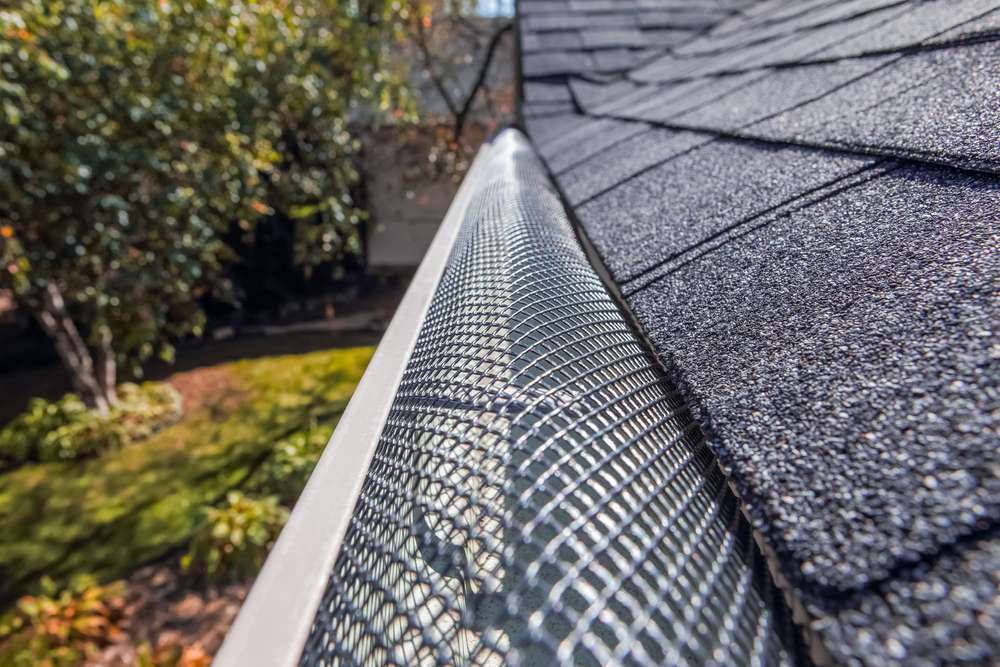

While many homes today are built without gutters, homeowners often have these added after they move in. Gutters provide a great way to channel rainwater away from your roof, walls, and foundation, preventing water damage and costly repairs.
Without gutters, your home could face basement flooding, soil erosion, and even mold growth. And, there is nothing worse than walking out your front door on a rainy day, only to become drenched by the heavy flow of water running off the roofline.
In this article, we’ll talk about the different types of gutter guards, how long you can expect them to last, and what makes each kind unique.
What are Gutter Guards?
Just as gutters keep water away from your home, gutter guards are designed to keep debris like leaves, twigs, and dirt out of your gutters. By preventing clogs, gutter guards make sure that rainwater can flow freely through your gutters and away from your home. They come in different types, each with its own benefits.
Let’s take a look at the common types of gutter guards you’ll see and why one might be better for your home than another.
Mesh Gutter Guards
Mesh gutter guards are metal sheets constructed with tiny holes throughout the surface. They are great at blocking large debris while allowing water to pass through. Mesh guards are durable and can handle heavy rainfall. However, smaller debris can sometimes get stuck in the mesh, requiring occasional cleaning. And they are built to last, often lasting for 20 years or more.
Screen Gutter Guards
Screen gutter guards are much like mesh guards but with larger holes. They are easy to install and work well for blocking larger debris like leaves and twigs. However, smaller particles can slip through the screens, so they may not be the best option if you have a lot of small debris. Plus, they only last seven to ten years, making mesh often the better choice.
Micro-Mesh Gutter Guards
With very fine holes, these gutter guards take mesh protection to the next level. They are excellent at blocking even the tiniest debris while still allowing water to flow through, making them one of the most effective types of gutter guards. However, they can be more expensive, will require replacement after about ten years, and may require professional installation.
Reverse Curve Gutter Guards
Reverse curve gutter guards are constructed to maneuver rainwater over a curved surface while forcing leaves and debris to fall to the ground. These guards are very effective at keeping gutters clear but can be more visible from the ground and may require more maintenance to keep them in good working order. When well-cared for, reserve curve gutter guards can last five to seven years or more.
Brush Gutter Guards
Brush gutter guards look much like large pipe cleaners but instead of using them to create fun toys and characters, they sit inside your gutters. They allow water to flow through but catch leaves and other debris in their bristles. These guards are simple to install and maintain but can be less effective in heavy rain and might need regular cleaning to remove trapped debris. Brush gutter guards will last about 15 to 20 years with good care and maintenance.
Choosing the Right Gutter Guard
Choosing the right gutter guard depends on where you live and what your roof might be subjected to. For example, if you live in a heavily wooded area, you may be better off with micro-mesh guards. If you live in an area with little high-standing growth and the weather isn’t all that volatile, a screen or mesh guard might be the right choice.
And, if you’re looking for a budget-friendly option, foam or brush guards could be a good fit.
Why Reynolds Gutter Can Assist
At Reynolds Gutter, we understand the importance of keeping your gutters clean and your home protected. Our team of experts can help you choose the right gutter guard for your needs and provide professional installation.
With Reynolds Gutter, you can rest easy knowing your home is protected against water damage and its harmful effects. Contact us today to learn more!